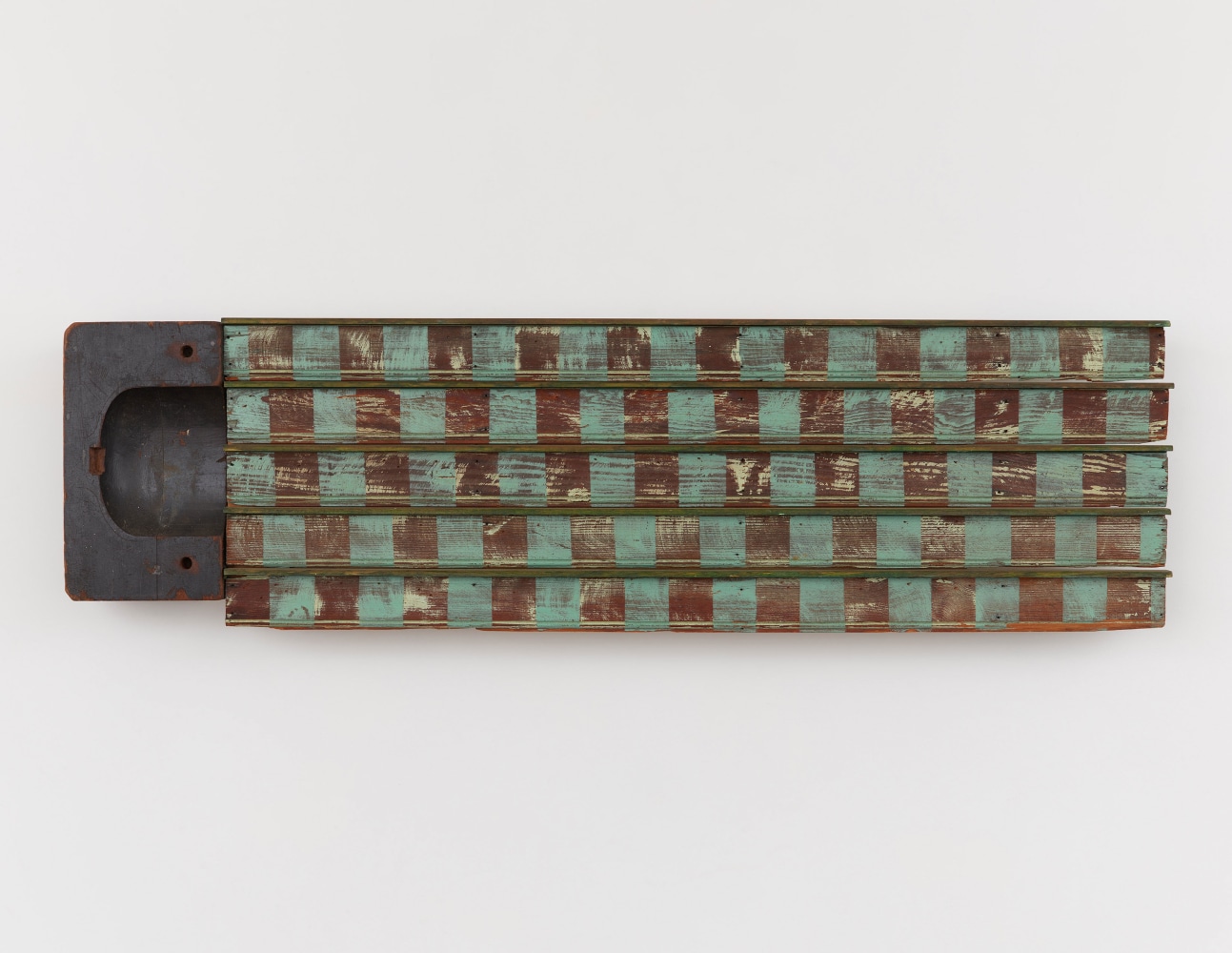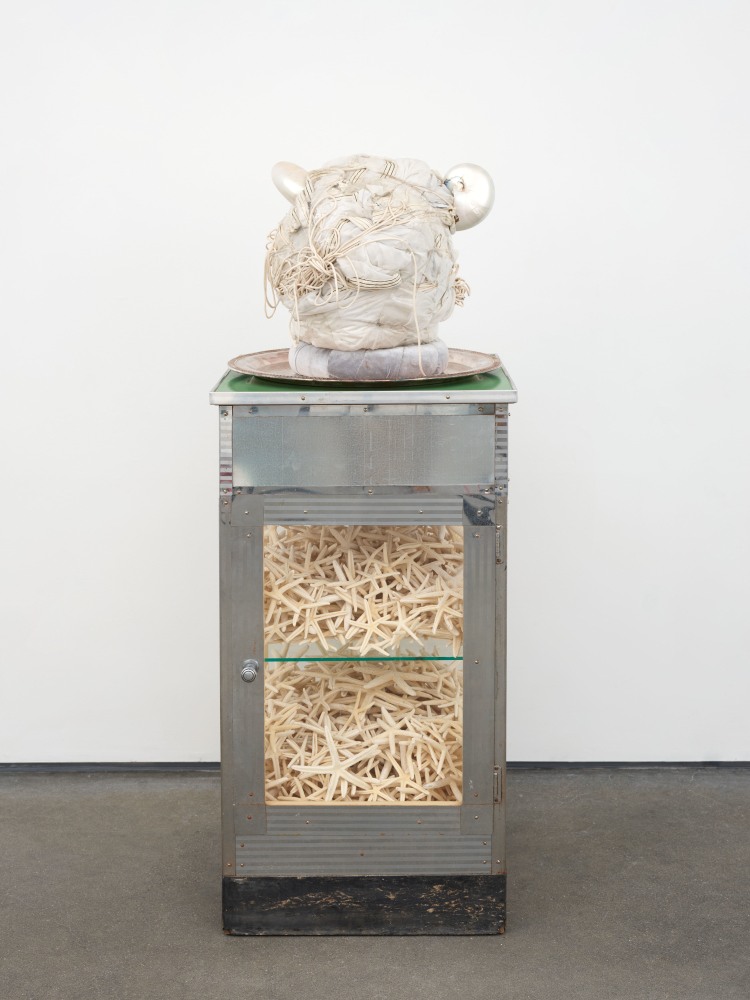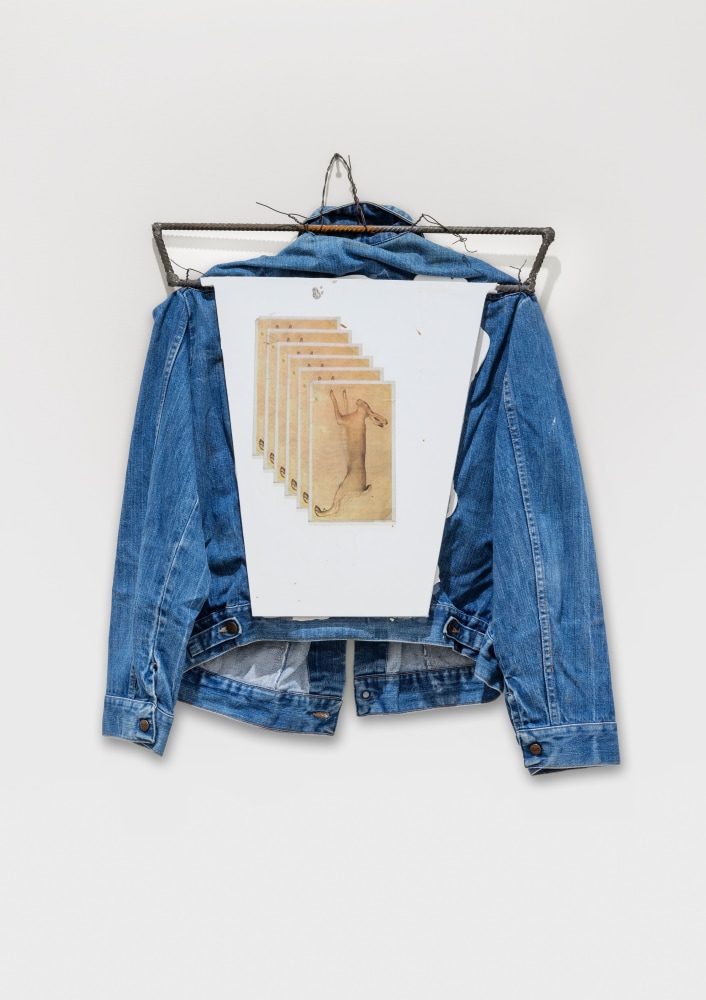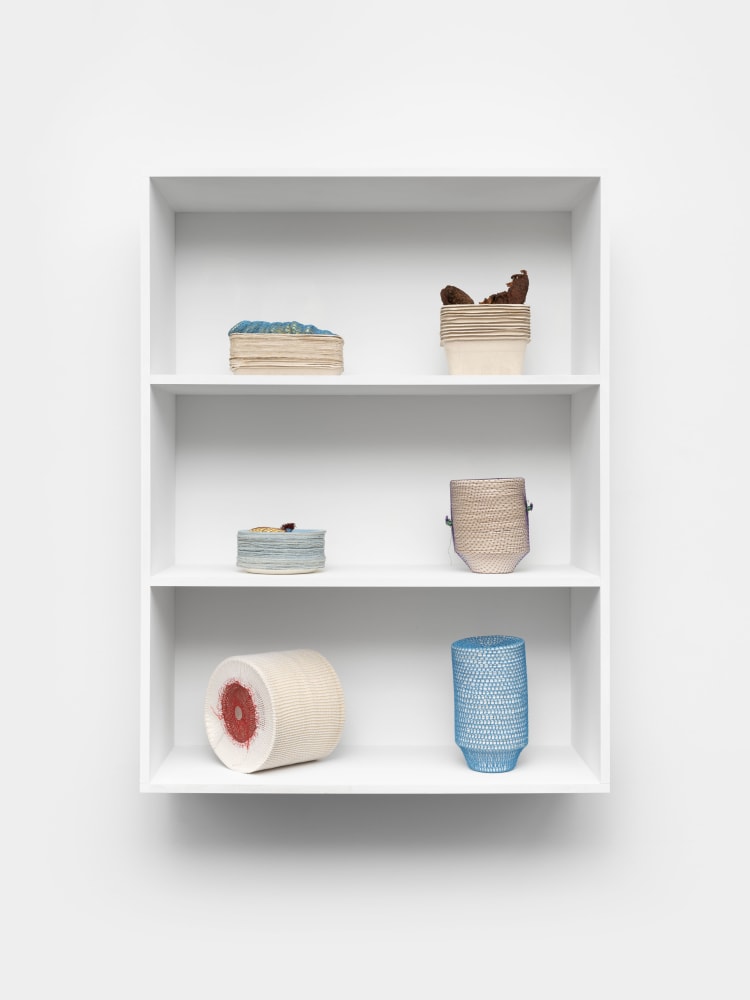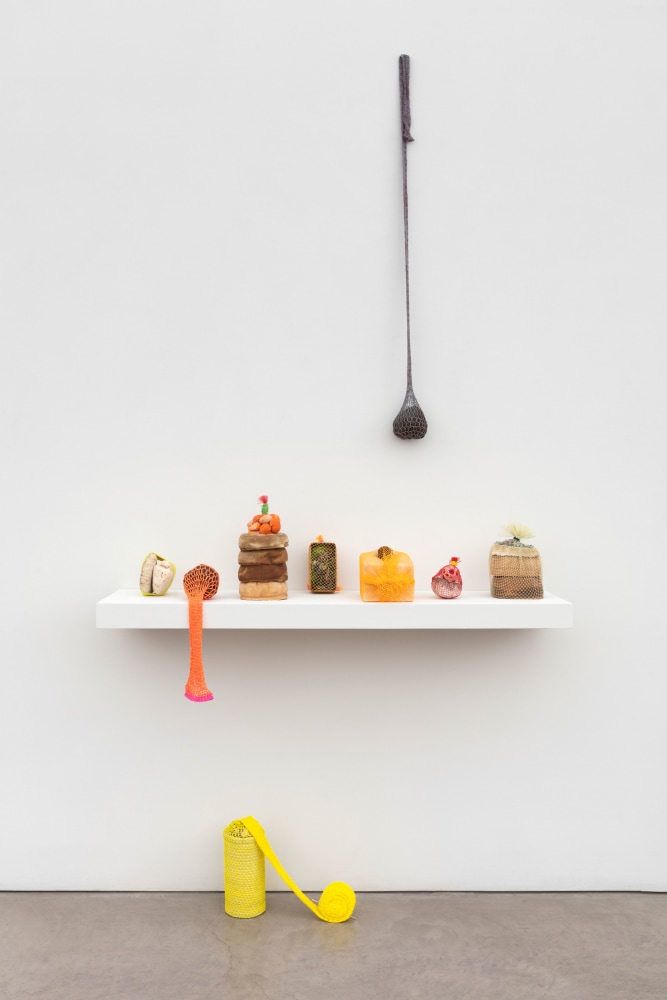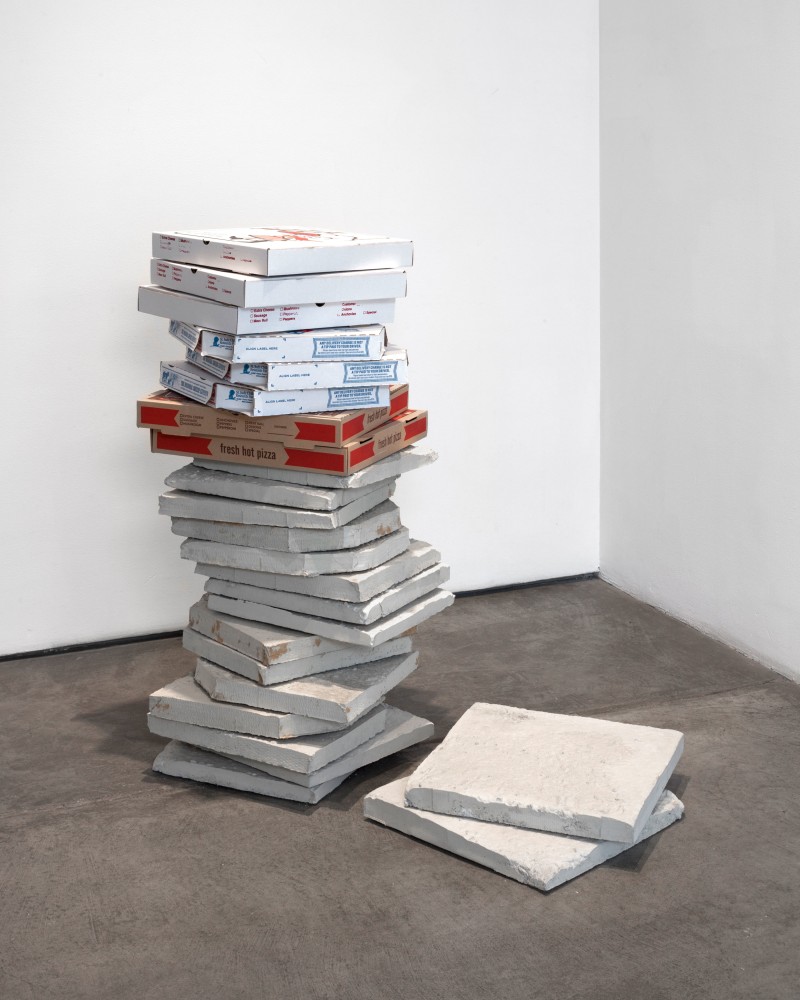A group exhibition of works by Terry Adkins, Matias Faldbakken, and Veronica Ryan celebrates the artists’ shared interest in the notion of re-purposing. With a unique sculptural vocabulary, each artist sources and transforms overlooked materials both fabricated and organic.
Terry Adkins produced enigmatic sculpture from salvaged materials imbued with social and historical significance by their previous uses. The manufactured forms of the works reference minimalism in their symmetry and remarkable elegance, while the irregular patinas reveal the past lives of distinct parts. In a process the artist and musician described as “potential disclosure,” Adkins would allow his found objects a period of gestation before realizing their transformed purpose. Adkins was a talented musician as well as an artist, and his work reveals the influence of music in its structure and composition. Jupiter, 1994, was assembled from hand-painted architectural materials that “sung out” to Adkins while seeking objects in junkyards near his studio in Dumbo, Brooklyn. Adkins considered his re-purposing of selected materials to be a continuation of their ongoing acquisition of cultural meaning.
Matias Faldbakken examines how visual information is endlessly multiplied, transmuted and undermined in the digital age by re-contextualizing found images and manipulating mass-produced objects. A work from the artist’s Screen Overlaps series (2016) is composed of an antique meat grinder supporting a screen-like plastered surface onto which a sequence of repeated images has been applied, suggesting an uncontrollable reiteration caused by malware, or layers of wheat-paste posters and vinyl billboards. Examples from the artist’s FUEL SCULPTURE series (2017) use funnels, jerry cans and plastic jugs as casting molds for poured concrete sculptures, rendering the innards of these ubiquitous items visible and thereby collapsing perceptions of interior and exterior. Faldbakken’s use of overlooked materials and seemingly indifferent execution challenges traditional modes for generating sculpture.
Meticulously handmade sculptures by Veronica Ryan transform overlooked everyday materials into treasures. Made with fruits, seeds, pods, husks, and the manufactured materials used to divide and transport them, Ryan’s fragile sculptural propositions are rich with signification. Early pieces on paper are highly personal in their incorporation of medical care items, and others have a universal significance imparted by surprising uses of ubiquitous materials, such as the brightly colored netting one might buy fruit or nuts in at the market. Nestled in niches, stacked on shelves, suspended, hanging, or neatly arranged on the floor, the works represent diverse psychological propositions and embody issues of displacement and alienation particular to their context.

![Installation view, [Re]Purpose: Terry Adkins, Matias Faldbakken, Veronica Ryan, Paula Cooper Gallery, February 4 - March 5, 2023. Photo: Oriol Tarridas](https://img.artlogic.net/w_1800,h_1000,c_limit/exhibit-e/5f5a43b313a837455d8b4567/3cdfed4469e09bbb7897ba774d3f4453.jpeg)
![Installation view, [Re]Purpose: Terry Adkins, Matias Faldbakken, Veronica Ryan, Paula Cooper Gallery, February 4 - March 5, 2023. Photo: Oriol Tarridas](https://img.artlogic.net/w_1800,h_1000,c_limit/exhibit-e/5f5a43b313a837455d8b4567/96919efc46f34440be889cc3a137692e.jpeg)
![Installation view, [Re]Purpose: Terry Adkins, Matias Faldbakken, Veronica Ryan, Paula Cooper Gallery, February 4 - March 5, 2023. Photo: Oriol Tarridas](https://img.artlogic.net/w_1800,h_1000,c_limit/exhibit-e/5f5a43b313a837455d8b4567/63c16325eac7f9664def9a03c2db8782.jpeg)
![Installation view, [Re]Purpose: Terry Adkins, Matias Faldbakken, Veronica Ryan, Paula Cooper Gallery, February 4 - March 5, 2023. Photo: Oriol Tarridas](https://img.artlogic.net/w_1800,h_1000,c_limit/exhibit-e/5f5a43b313a837455d8b4567/07362c9addafff9e19a80af5701b7f9b.jpeg)
![Installation view, [Re]Purpose: Terry Adkins, Matias Faldbakken, Veronica Ryan, Paula Cooper Gallery, February 4 - March 5, 2023. Photo: Oriol Tarridas](https://img.artlogic.net/w_1800,h_1000,c_limit/exhibit-e/5f5a43b313a837455d8b4567/6152fa5d3e752e438d946ef6979863d8.jpeg)
![Installation view, [Re]Purpose: Terry Adkins, Matias Faldbakken, Veronica Ryan, Paula Cooper Gallery, February 4 - March 5, 2023. Photo: Oriol Tarridas](https://img.artlogic.net/w_1800,h_1000,c_limit/exhibit-e/5f5a43b313a837455d8b4567/db15b13ffed4e71da600a5305ef34c8a.jpeg)
![Installation view, [Re]Purpose: Terry Adkins, Matias Faldbakken, Veronica Ryan, Paula Cooper Gallery, February 4 - March 5, 2023. Photo: Oriol Tarridas](https://img.artlogic.net/w_647,h_647,c_limit/exhibit-e/5f5a43b313a837455d8b4567/3cdfed4469e09bbb7897ba774d3f4453.jpeg)
![Installation view, [Re]Purpose: Terry Adkins, Matias Faldbakken, Veronica Ryan, Paula Cooper Gallery, February 4 - March 5, 2023. Photo: Oriol Tarridas](https://img.artlogic.net/w_647,h_647,c_limit/exhibit-e/5f5a43b313a837455d8b4567/96919efc46f34440be889cc3a137692e.jpeg)
![Installation view, [Re]Purpose: Terry Adkins, Matias Faldbakken, Veronica Ryan, Paula Cooper Gallery, February 4 - March 5, 2023. Photo: Oriol Tarridas](https://img.artlogic.net/w_647,h_647,c_limit/exhibit-e/5f5a43b313a837455d8b4567/63c16325eac7f9664def9a03c2db8782.jpeg)
![Installation view, [Re]Purpose: Terry Adkins, Matias Faldbakken, Veronica Ryan, Paula Cooper Gallery, February 4 - March 5, 2023. Photo: Oriol Tarridas](https://img.artlogic.net/w_647,h_647,c_limit/exhibit-e/5f5a43b313a837455d8b4567/07362c9addafff9e19a80af5701b7f9b.jpeg)
![Installation view, [Re]Purpose: Terry Adkins, Matias Faldbakken, Veronica Ryan, Paula Cooper Gallery, February 4 - March 5, 2023. Photo: Oriol Tarridas](https://img.artlogic.net/w_647,h_647,c_limit/exhibit-e/5f5a43b313a837455d8b4567/6152fa5d3e752e438d946ef6979863d8.jpeg)
![Installation view, [Re]Purpose: Terry Adkins, Matias Faldbakken, Veronica Ryan, Paula Cooper Gallery, February 4 - March 5, 2023. Photo: Oriol Tarridas](https://img.artlogic.net/w_647,h_647,c_limit/exhibit-e/5f5a43b313a837455d8b4567/db15b13ffed4e71da600a5305ef34c8a.jpeg)
